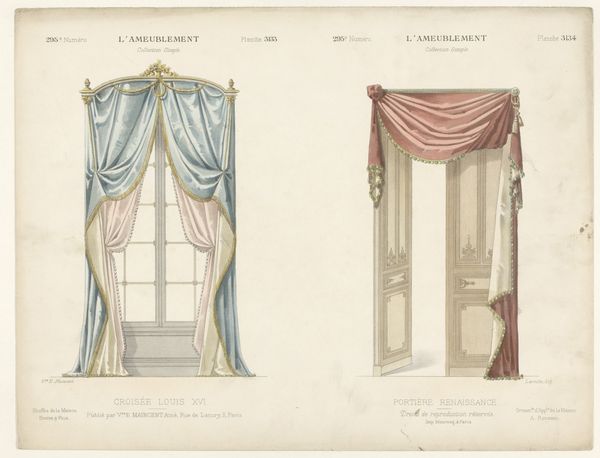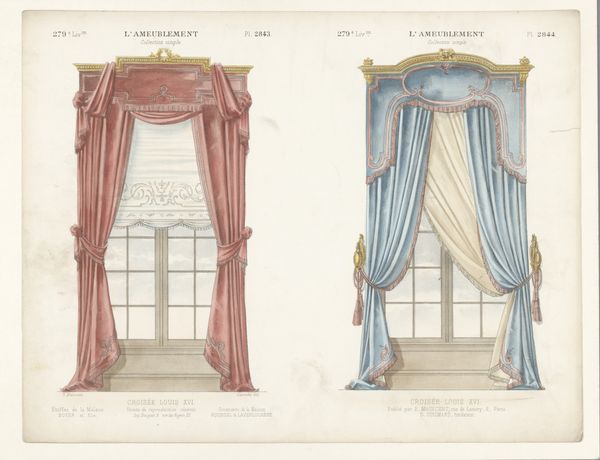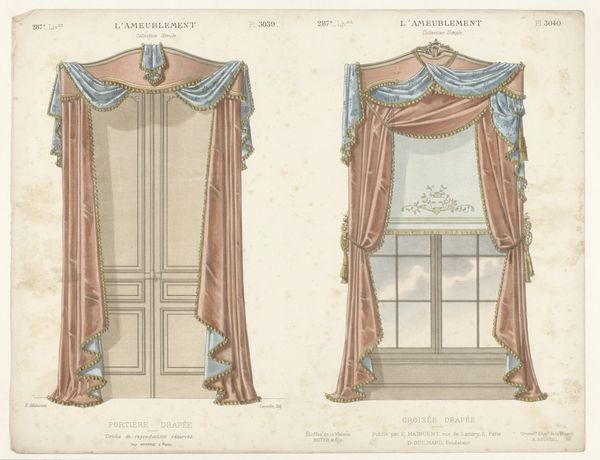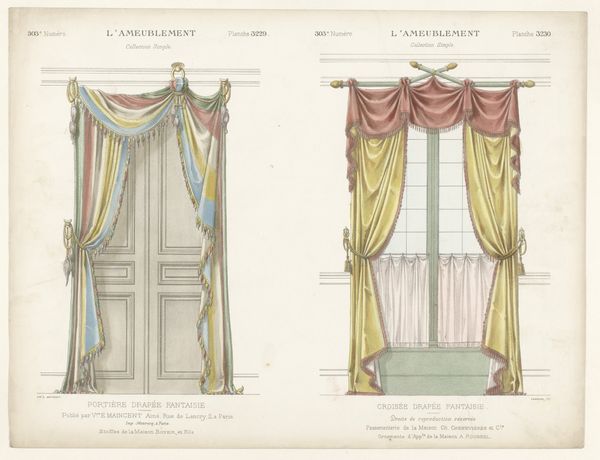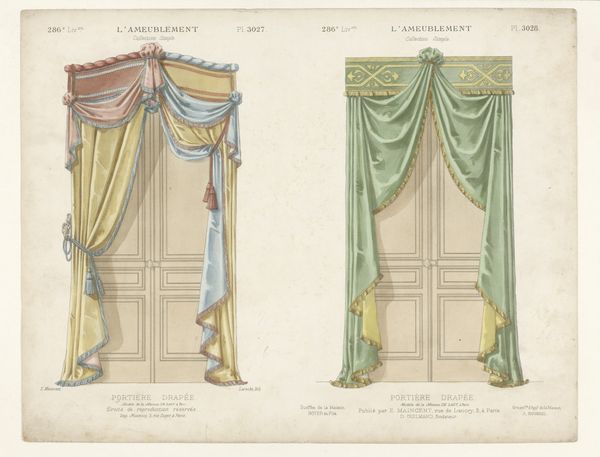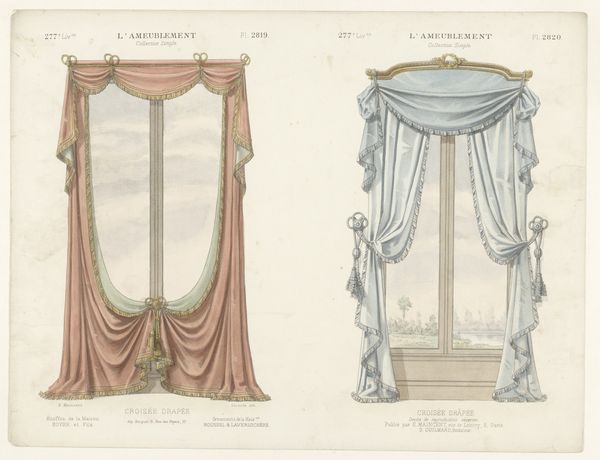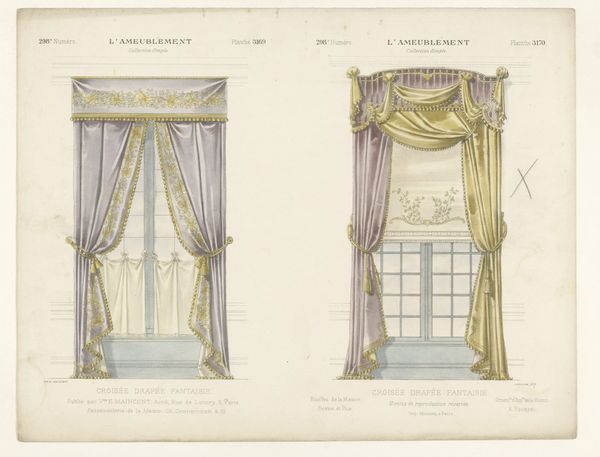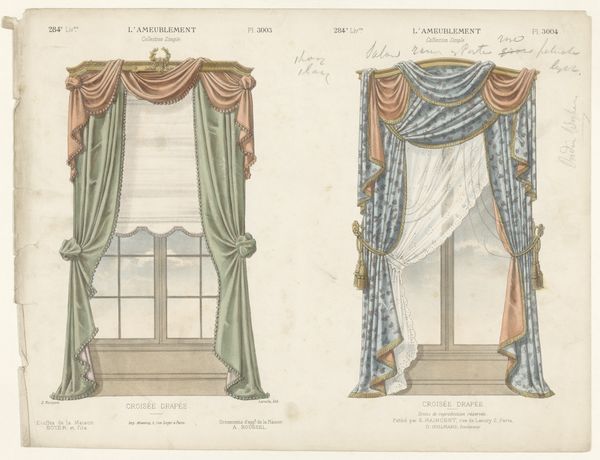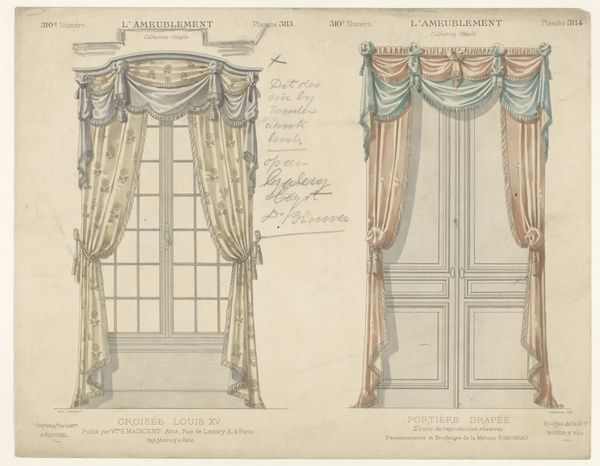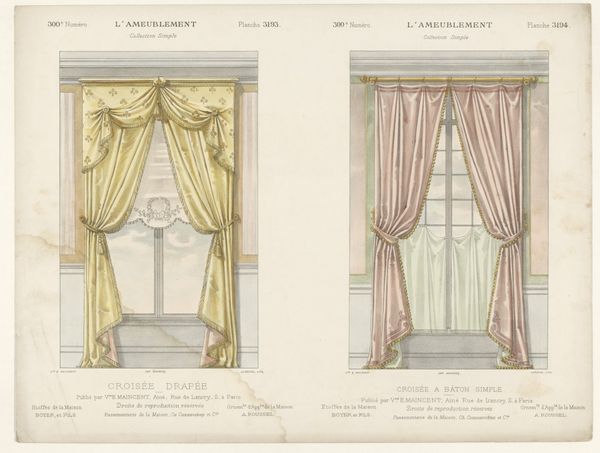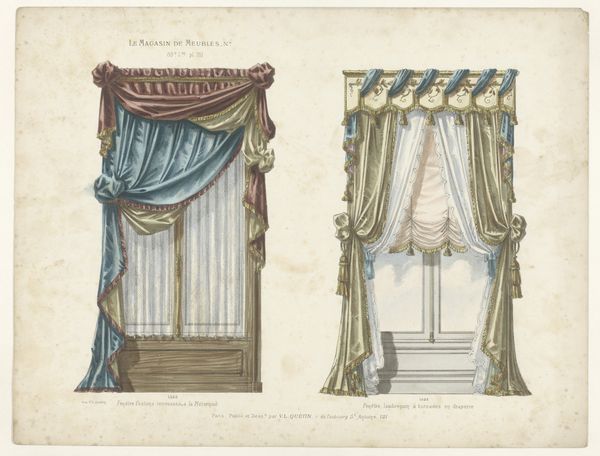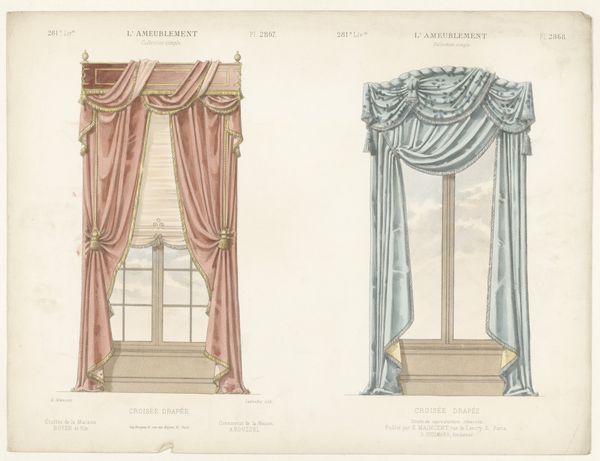
print, watercolor
#
art-nouveau
# print
#
watercolor
#
sketchbook drawing
#
watercolour illustration
#
decorative-art
Dimensions: height 276 mm, width 360 mm
Copyright: Rijks Museum: Open Domain
Curator: Here we have "Twee vensters met gordijnen," a print with watercolor accents created between 1885 and 1895 by Léon Laroche. The Art Nouveau piece features two window treatments side-by-side. Editor: My immediate thought is one of lavishness, but a constrained kind. These pastel shades and intricate draperies feel very… performative, almost like theatre curtains. Curator: Absolutely, and that gets to the heart of Art Nouveau’s project—elevating everyday objects to art. It wasn't simply about beauty, though. This period reflects seismic shifts in societal values, particularly surrounding the role of women. Domestic space became intensely coded. Editor: Interesting! Because to me, windows have always represented transitions between interior and exterior realms. The fabrics and patterns surrounding these portals carry all sorts of symbolism depending on time and place, often speaking to aspirations or internalized values through luxury fabrics like velvet, silks, tassels, embroidery, lace… Curator: Precisely. Consider the tension between public and private spheres for women at the time. While Art Nouveau offered an aesthetic of liberation, it often confined women to the domestic space. These highly designed window treatments symbolize this paradox – controlling not only the view but the narrative itself. Editor: Looking closely, the choice of pastels strikes me, specifically this delicate light blue and pale rose combination. It evokes notions of romance, delicacy, innocence, even something ethereal that seems calculated and symbolic of bourgeois expectations surrounding idealized femininity within private sanctuaries. The sky outside visible through these gridded panes furthers feelings for what's deemed domestic or permissible. Curator: That intersection of color and constraint is insightful. These weren’t merely window coverings but signifiers, declarations of status and adherence to a very specific socio-economic class. The decorative tassels dangling, the stylized flourishes… they broadcasted adherence to established hierarchies during an era of enormous political and cultural flux. Editor: In the end, this illustration does less to offer unique designs themselves but documents changing cultural values expressed in textiles. The arrangement, color palette, detailing of decorative window designs… all serve larger purposes as records of interior expressions representing far more than purely aesthetic taste preferences. Curator: Agreed. Considering the period through the lens of domestic space gives these draperies incredible weight. Editor: Yes, what seemed superficial becomes an eloquent visual archive.
Comments
No comments
Be the first to comment and join the conversation on the ultimate creative platform.
